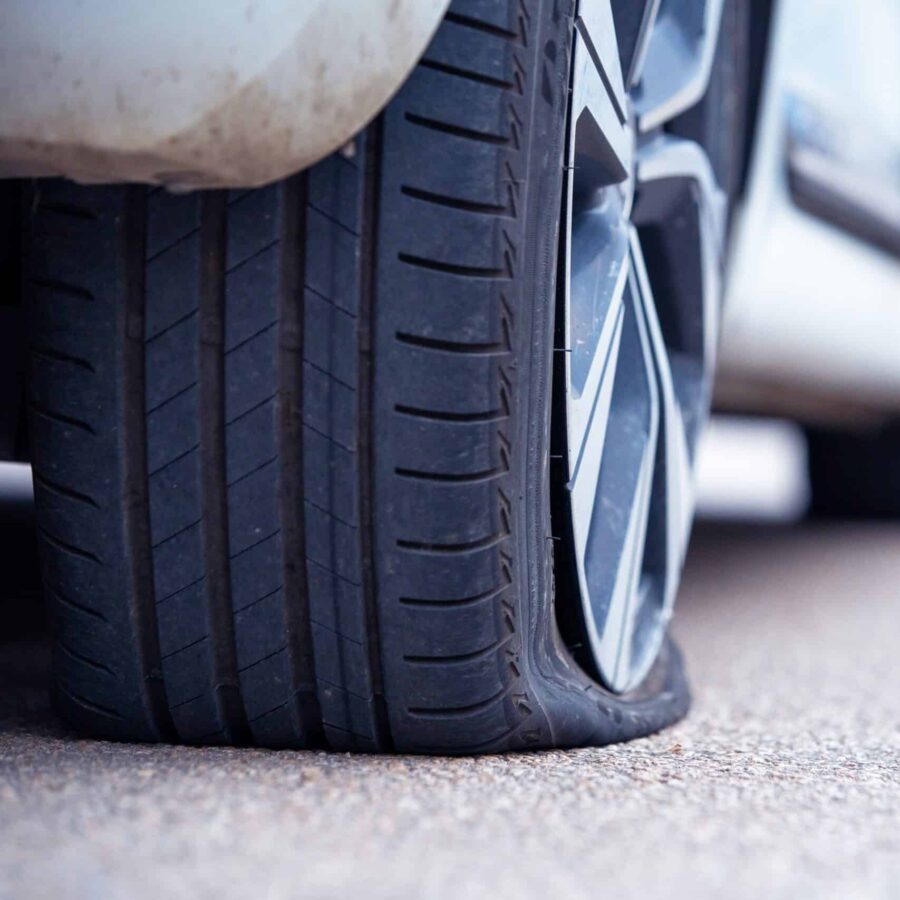Whenever a consumer attorney has a client with a tire failure case, there are specific steps that should be taken in order to protect the client’s case, preserve the evidence, and evaluate the strength of the liability theory. This week’s newsletter outlines the Top Ten items that should be on this list.
1. Have an Investigator Photograph and Videotape the Scene
As soon as possible after a crash that might have been caused by a tire failure, hire an investigator to take concise photographs and video footage of the accident scene. Your investigator should take pictures of any witness marks including yaw marks, gouge marks, and indentations on the ground. Note: do not do this yourself – hire a good investigator. You don’t want to unnecessarily make yourself a witness.
2. Take a Scene Survey
Have a surveyor or engineer conduct a scene survey. The survey should include documentation of the location of all witness marks and debris. This survey will be critical down the road for your accident reconstruction expert, as well as the design or manufacturing defect experts, to use in forming their opinions.
3. Collect All Scene Evidence
Have an investigator collect all evidence at the scene that was not picked up by the emergency personnel. He should collect anything that could arguably be considered evidence including debris from the crashed vehicles, pools of glass, road damage, and gouge marks. Most importantly, the investigator should conduct a thorough search for any pieces of tire or tire tread. He should photograph each piece of evidence before he picks it up and document where it was found. Every piece of evidence can make a tremendous difference in your ability to prosecute the case later.
4. Maintain Chain of Custody
After documenting the location of the evidence at the scene, you must then take the items into your law firm’s custody. After photographing and identifying the location of each piece of evidence, carefully bag each item and affix a number to the bag. Compile an index which includes these numbers and a corresponding description of the evidence. The index should also include a log of which shows the date and location of where the evidence is stored, as well as a record of who has access to the evidence.
5. Locate the Subject Vehicle (or Vehicles) and Send Out Preservation Letters
As much as the accident scene needs to be examined and recreated, it is also essential to locate the subject vehicles involved in the accident and send out preservation letters to whoever has possession of the vehicle (e.g. a tow yard or the property insurer). Preservation is imperative because the vehicles may be important evidence in a tire case. For example, there may be witness marks inside the wheel wells which might provide insight into how a tire failed.
6. Move the Vehicle to a Covered Secure Facility
Once the vehicles have been obtained for preservation, they must be moved to a covered, secure facility. Before moving the vehicle you should have your investigator take detailed photographs of the vehicle before you take possession. When transporting the vehicle – especially one that has experienced significant damage – you should use a tow truck company that has the ability to tow the vehicle on a dolly. Evidence vehicles should be kept at a safe storage facility or warehouse that is under the sole control of the investigator and attorney.
7. Interview the Eyewitnesses
While memories are still fresh, you should interview eyewitnesses to the crash. Whenever possible, record the statements so that you have a clear record when it’s time for the witness to give testimony during deposition or trial.
| 8. Hire a Qualified Tire Expert
Hire a real, “A-Team” tire expert to conduct a forensic examination of the tire. Don’t cheap out by hiring a less qualified expert; there are only a handful of plaintiff experts who are truly qualified and they are not cheap. After examining the tire your expert should be able to tell you whether or not you have a case and the potential defenses that will likely be used against you at trial. 9. Pull NHTSA Data |
The National Highway Traffic Safety Administration (“NHTSA”) maintains a wealth of information about tires, recalls, and tire failures. Much of this information is available upon request. However, there are a few consultants who can probably do this job for you more efficiently and effectively than you can, so you should consider hiring someone to help with this project. Hiring a great consultant to help gather documents can make a huge difference in the amount and quality of the information you get from NHTSA.
10. Gather and Discovery Key Documents
Key documents can make or break your case. Documents will show you how the tire was constructed and if there are any arguable design deficiencies. Documents can also show if the tire has an unusually high failure rate – tire companies keep this kind of data and refer to this information as “adjustment data.” Networking with other lawyers who have had similar cases against the same tire company can also be an incredible asset for any case, in helping you obtain key documents.
Finally, if you have any questions or would like to hire co-counsel to assist you with your case, call us at the Newsome Law Firm. We work with referral counsel throughout Florida and the United States and would love to talk to you about your case. Call us anytime at (800) 808-5977 or email Rich Newsome at newsome@newsomelaw.com.


